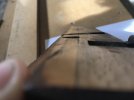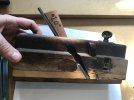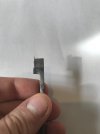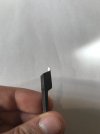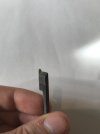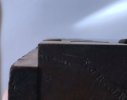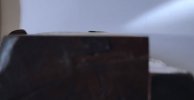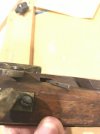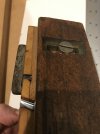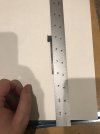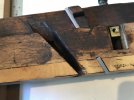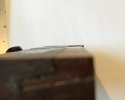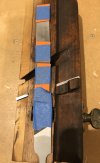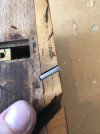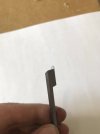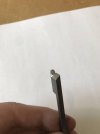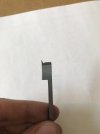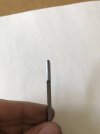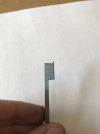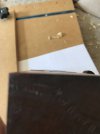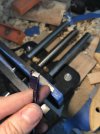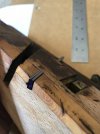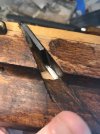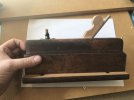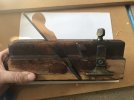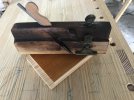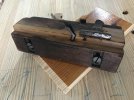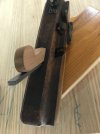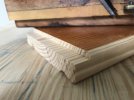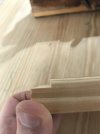I got a moving fillister plane off eBay originally just because I thought it would be nice to take dimensions off of for a far future project. Once I got it I decided it was in decent enough shape to restore. It actually more or less works after de-rusting the hardware, re-gluing the boxing, flattening the sole and truing up the side a little, sharpening the iron, etc. It needs a new wedge which I will be working on soon.
However one issue I have noticed is the nicker's side seems to be at an angle to the plane's side, and not in the convenient direction. I am not sure how it got this way, maybe the nicker was originally for a plane with leaning wedge slot and got into this body later. It was like this even before I did the light truing to the side of the plane. It can't be moved in its pocket enough to correct this.
Anyway, because the nicker side is not square to the sole it seems to interfere with making a vertical rabbet wall. I can make vertical walls with the grain just fine without the nicker. Is it reasonable to gently grind it until it is more or less protruding parallel to the side of the plane? Any advice on doing so? It is very small so heat and control seem like they will be tricky and the outer edge is radiused so I'm not sure how to mark it. It seems too hard to file unfortunately. I am thinking maybe I will attach it to a larger piece of material and check with calipers frequently during grinding.
Also, is the radius on the outside worth keeping or should I aim for a flat outside edge (ie just a flat plane parallel to the plane's side?)
Edit: I've also considered just making a new nicker because I have enough scrap O1 to do this but I am still interested in recommendations for the right geometry for these things.
PS The plane does have a depth stop, it is just removed for clarity.
However one issue I have noticed is the nicker's side seems to be at an angle to the plane's side, and not in the convenient direction. I am not sure how it got this way, maybe the nicker was originally for a plane with leaning wedge slot and got into this body later. It was like this even before I did the light truing to the side of the plane. It can't be moved in its pocket enough to correct this.
Anyway, because the nicker side is not square to the sole it seems to interfere with making a vertical rabbet wall. I can make vertical walls with the grain just fine without the nicker. Is it reasonable to gently grind it until it is more or less protruding parallel to the side of the plane? Any advice on doing so? It is very small so heat and control seem like they will be tricky and the outer edge is radiused so I'm not sure how to mark it. It seems too hard to file unfortunately. I am thinking maybe I will attach it to a larger piece of material and check with calipers frequently during grinding.
Also, is the radius on the outside worth keeping or should I aim for a flat outside edge (ie just a flat plane parallel to the plane's side?)
Edit: I've also considered just making a new nicker because I have enough scrap O1 to do this but I am still interested in recommendations for the right geometry for these things.
PS The plane does have a depth stop, it is just removed for clarity.

